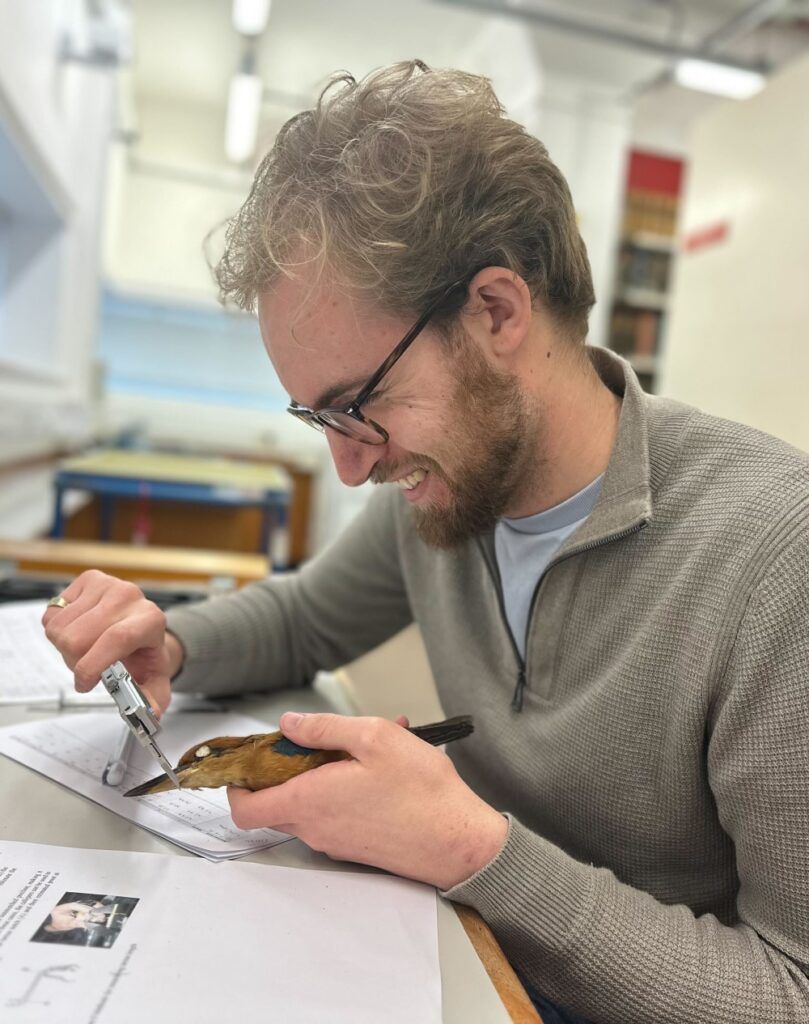Meet Matt Mitchell: PTES intern
In this series, we chat to the dedicated staff members, conservation partners and volunteers at PTES. We find out why each of them chose a career in wildlife conservation, what they find rewarding about their work and what they love most about what they do.
Matt Mitchell
PhD student at the University of London and Institute of Zoology, Zoological Society of London
What’s your role?
I’m a PhD student based at University College London and the Institute of Zoology, Zoological Society of London. My project aims to understand the effects of long-term captivity on extinct-in-the-wild species. We’ll use these learnings to help plan the recovery of three species; Guam kingfishers, Socorro doves and Vietnam pheasants. Before starting my PhD, I worked on a PTES-funded internship to understand the way in which hedgehogs and other British wildlife interact with under-road tunnels. These results are still being analysed.
Has your conservation work been rewarding and if so, in what way?
I’ve been lucky enough to work with wildlife in both rehabilitation and in a research context. The most rewarding part of working in conservation is definitely the feeling of being able to make even a small contribution to the protection or recovery of a species facing rapid decline or the threat of extinction. In my current role, it’s also rewarding to apply all the experience I’ve gained from my education and internships to do impactful science on critically endangered species, while learning new skills with every new project.
Do you have a special love for a particular species?
I’ll have to pick two! And it may not be a surprise that they are both species I’ve worked with. I developed a fascination with hedgehogs when working in wildlife rehabilitation because of their attitude and spikiness. It has been an absolute joy and privilege to work on them, thanks to PTES. The other species that I have a particular soft spot for is Guam kingfishers, partly because they are such beautiful birds, but also because they’ve been driven to the brink of extinction by humans and deserve our attention to help them recover. They’ll also always be special to me as the first species of such high conservation concern that I’ve been lucky enough to work with.
What difficulties or challenges do you face in your work and how to think you’ll overcome them?
One of the greatest challenges I face in my work is trying to understand biological systems with limited data. There are only a very small number of my study species left, so a lot of my time is spent reading up on which techniques are best to understand trends in the data I’ve collected.
Reflecting on your past, what has been one of your most memorable experiences so far?
On my very first morning volunteering on a turtle conservation project, when I was tired and jet-lagged and just wanted to get back in bed, our team was tasked with checking the status of a turtle nest. I will never forget the moment when I saw the first little hatchling dig up in front of me followed by another and another and another until there were forty of them wriggling around in the sand in front of me!
How can we best inspire the younger generation and what advice would you give to young conservationists just starting out?
In the next few months, I will be completing my PhD research and I’m looking forward to sharing my findings with everyone. After that, I’m not sure what opportunities will arise, but my career aspirations lie within conservation. It’s hard to be certain of the dormouse’s future, what with ongoing habitat loss and climate change, but I am certain that there are many people who will continue to ensure their survival.
Tell us your favourite wildlife fact
My favourite wildlife fact probably has to be that warthogs and mongooses have a symbiotic relationship, where mongooses crawl over warthogs to eat the parasites that live in their hair. The warthogs get groomed and the mongooses get dinner. Perhaps Timon and Pumbaa’s relationship isn’t so fantastical after all…
What does the future hold? For your and for your species?
The next two years I’ll be finishing my PhD. After that I’m not sure where life will take me, but it will definitely be somewhere in conservation. I’m hoping that my work helps inform the recovery of my species while also helping the broader scientific community understand how captivity and captive management might affect a species’ ability to re-adapt to the wild. For Guam kingfishers, the future holds a first translocation into the wild, hopefully within the next 12 months. For them, and all other extinct-in-the-wild species I hope that the future holds a safe recovery and a successful reintroduction to the habitats in which they belong.
Header image of Guam Kingfisher by John Ewen

